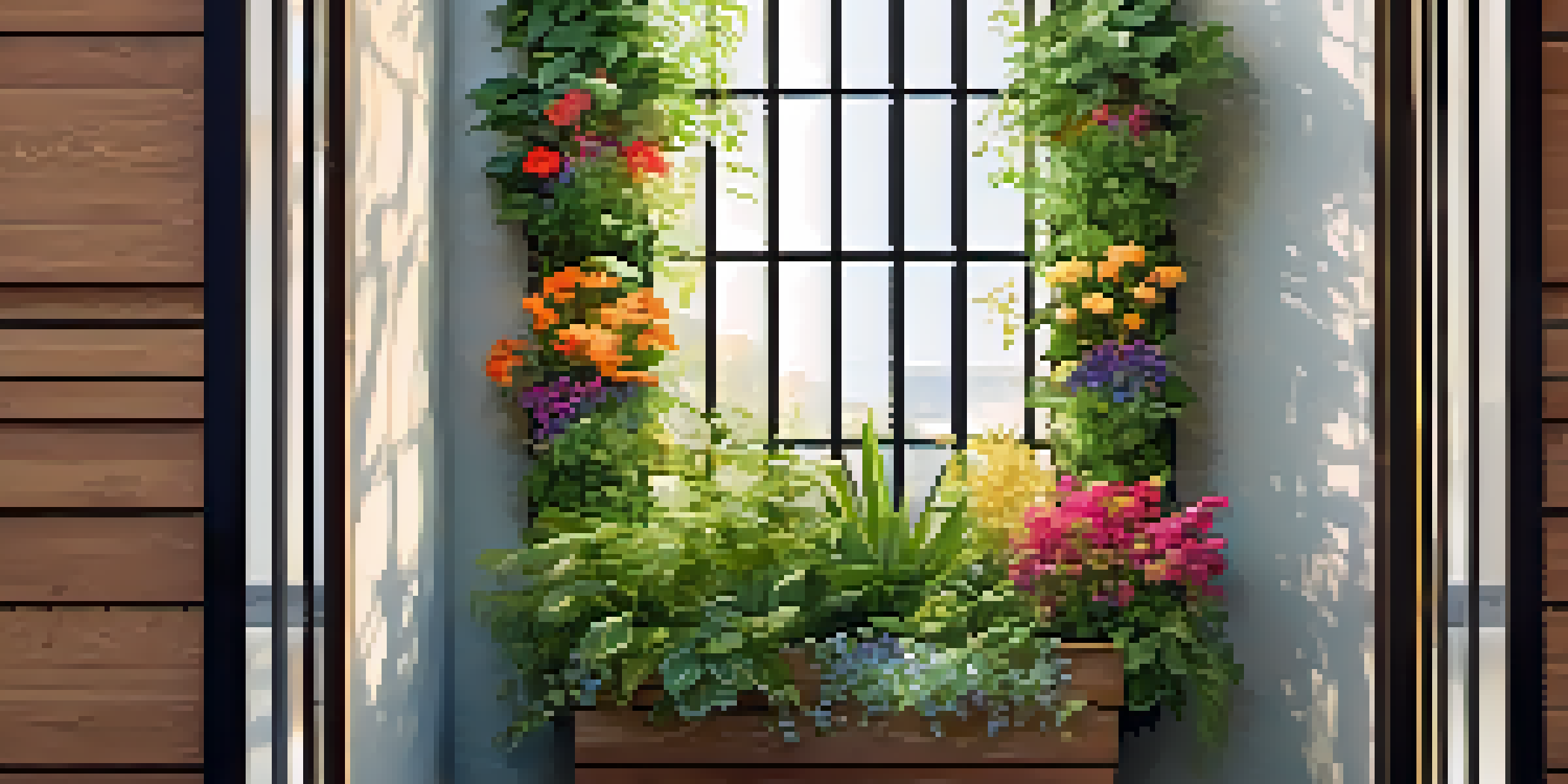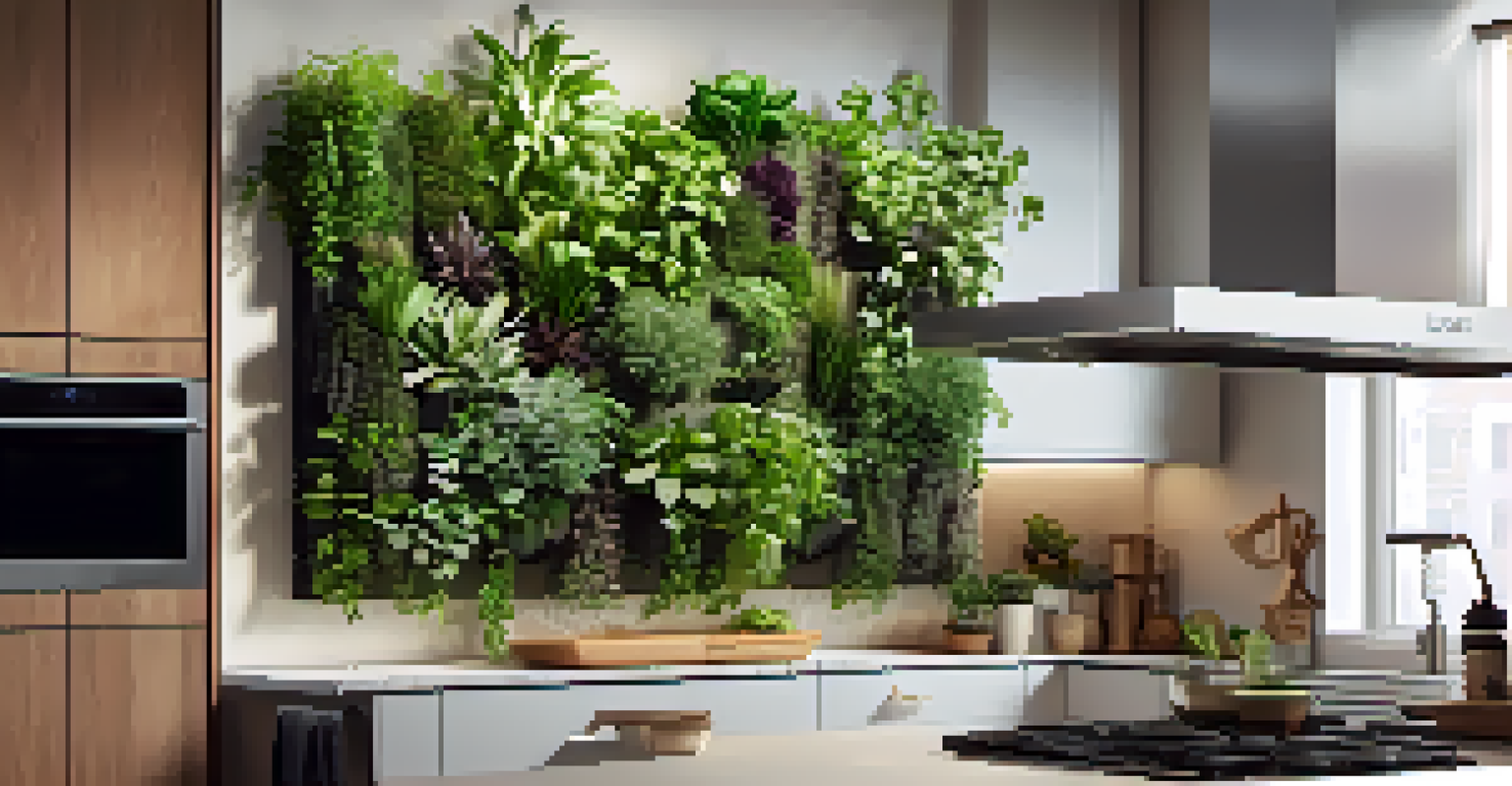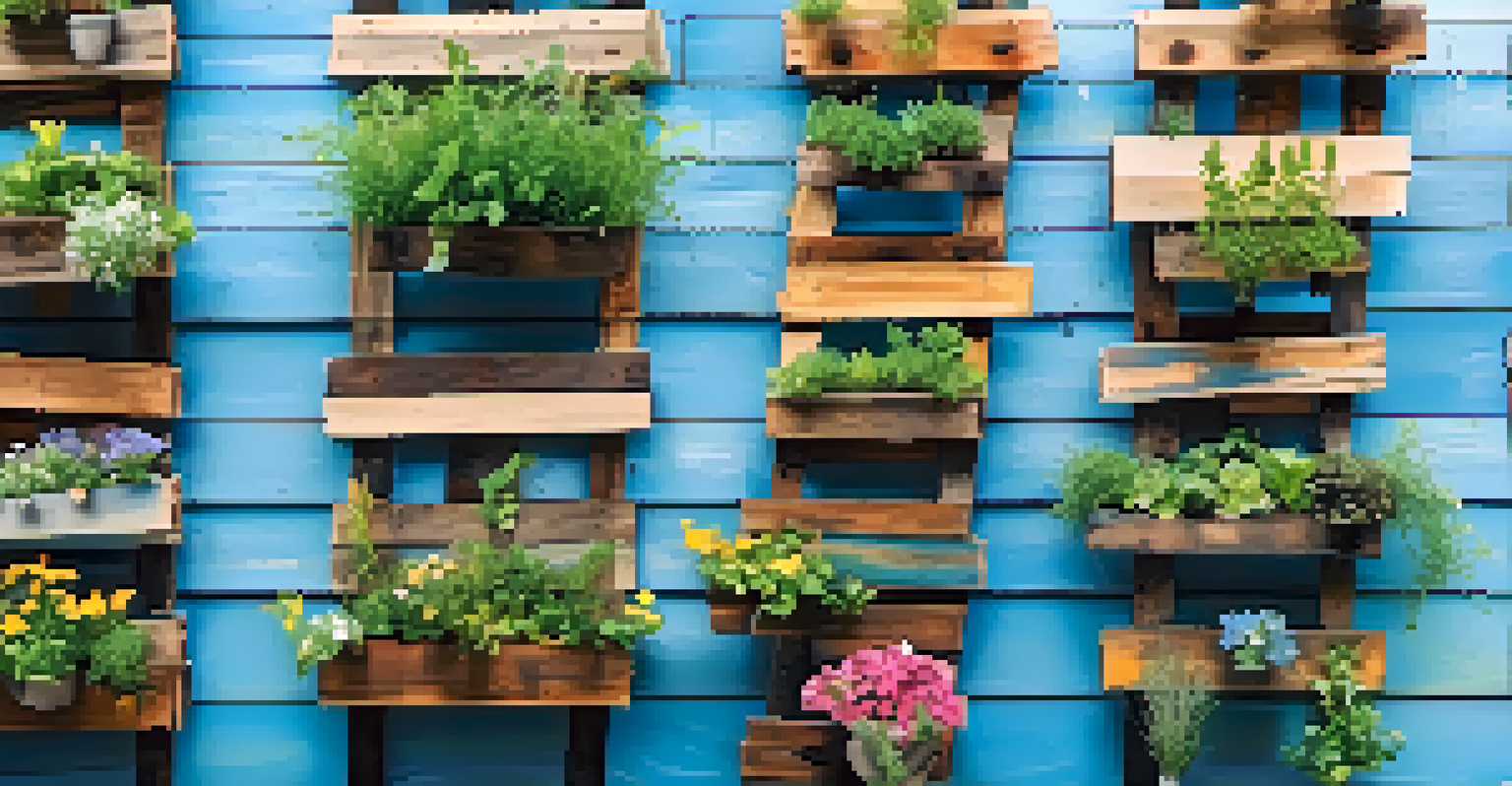Top 10 Vertical Gardening Techniques for Small Spaces

Understanding Vertical Gardening: A Space-Saving Solution
Vertical gardening is an innovative way to grow plants in limited spaces by utilizing vertical surfaces. This technique allows you to create a lush garden even in small backyards, balconies, or even indoors. By growing upwards rather than outwards, you can maximize your gardening potential and add greenery to any area.
Gardening is not a job, it's a way of life.
Using structures like trellises, shelves, or wall planters, vertical gardening can transform bare walls into vibrant displays of flowers, herbs, and vegetables. This not only enhances your living space but also contributes to better air quality and a calming environment. Imagine a once-empty wall now bursting with colors and fragrances!
Whether you're a seasoned gardener or a beginner, vertical gardening offers a practical solution for space constraints. It encourages creativity and allows you to customize your garden according to your tastes, making it a rewarding experience for anyone looking to green their space.
Choosing the Right Plants for Vertical Gardens
Selecting the right plants is crucial for a successful vertical garden. Opt for varieties that thrive in your local climate and are suitable for vertical growth, such as climbing plants, trailing vines, and compact herbs. Some popular choices include peas, tomatoes, strawberries, and various types of ornamental plants.

When selecting plants, consider their growth habits and nutrient needs. Plants that can climb or cascade down will make your vertical garden visually appealing while also maximizing space. It's a bit like choosing friends who complement each other; your plants should support one another’s growth.
Maximize Space with Vertical Gardening
Vertical gardening allows you to grow a variety of plants in limited spaces by utilizing vertical surfaces, enhancing both aesthetics and air quality.
Additionally, think about the amount of sunlight each plant requires. Some plants thrive in full sun, while others prefer partial shade. By grouping plants with similar light requirements, you can create a thriving vertical garden that makes the most of your small area.
Using Trellises and Arches for Vertical Support
Trellises and arches are fantastic structures to support climbing plants. They not only save space but also add an architectural element to your garden. By training plants to grow on these structures, you can create beautiful vertical displays that draw the eye upward.
The greatest gift of the garden is the restoration of the five senses.
When installing a trellis or arch, consider the placement to ensure your plants receive adequate sunlight. Positioning them against a sunny wall or in a garden bed can maximize light exposure. Imagine walking through a garden archway adorned with vibrant blooms — it’s a simple addition that can transform your space!
Moreover, trellises can be made from various materials like wood, metal, or even repurposed items, allowing for endless customization. Whether you prefer a rustic wooden trellis or a sleek modern design, there’s a style to fit every taste and space.
Wall Planters: Stylish and Functional Gardening
Wall planters are a stylish way to add greenery to your vertical garden. They come in various designs and materials, allowing you to create a unique look that reflects your personality. These planters can be hung on walls, fences, or even inside your home, turning any flat surface into a garden.
Using wall planters not only saves ground space but also adds a dynamic visual element to your garden. Imagine a colorful array of herbs and flowers cascading down a wall, creating a living piece of art. They can also be used to create a stunning focal point in your outdoor area.
Choose Plants Wisely for Success
Selecting the right plants that thrive in your climate and have compatible growth habits is crucial for creating an appealing and productive vertical garden.
When choosing wall planters, ensure they have proper drainage to prevent water accumulation. It's essential to select the right plants that can thrive in these confined spaces. Herbs like basil and mint are excellent choices, as they not only look good but also provide fresh ingredients for your kitchen.
Vertical Garden Kits: Convenience at Your Fingertips
For those new to vertical gardening, vertical garden kits offer a convenient solution. These kits come with everything you need, including planters, soil, and sometimes even seedlings. They simplify the setup process and make it easy for anyone to start their vertical garden.
Typically, vertical garden kits are designed for specific plants, ensuring that you have the right materials for successful growth. This eliminates the guesswork and allows you to focus on caring for your plants. Think of it as a recipe kit — all the ingredients are pre-measured and ready to go.
Additionally, many of these kits are compact, making them perfect for small spaces. Whether you’re looking to grow herbs in your kitchen or flowers on your balcony, a vertical garden kit can be a fantastic starting point for your gardening adventure.
The Benefits of Hydroponic Vertical Gardening
Hydroponic vertical gardening is an exciting method that allows you to grow plants without soil. Instead, plants are nurtured in nutrient-rich water, which can lead to faster growth and higher yields. This soil-less approach is perfect for small spaces where traditional gardening may not be feasible.
One of the biggest advantages of hydroponics is its ability to save water. Because the system recirculates water, it uses less than traditional gardening methods. Imagine reducing your water usage while still enjoying a bountiful harvest — it’s a win-win!
DIY Structures for Personal Touch
Creating your own vertical garden structures, like repurposed pallets, not only saves money but also adds a unique and personal flair to your gardening space.
Moreover, hydroponic systems can be set up indoors, allowing you to grow fresh produce year-round, regardless of the weather outside. With a little investment in equipment, you can enjoy a consistent supply of fresh vegetables, herbs, and even fruits, all from the comfort of your home.
Creative DIY Ideas for Vertical Garden Structures
If you’re looking for a fun project, creating your own vertical garden structures can be incredibly rewarding. From repurposing wooden pallets to building a simple ladder planter, the possibilities are endless. This DIY approach not only saves money but also allows for personal expression in your gardening space.
For instance, a wooden pallet can be propped against a wall and filled with soil, creating a rustic and charming vertical garden. You can grow herbs, flowers, or even small vegetables in the individual sections of the pallet. It’s a great way to give new life to an old item while beautifying your space.

Additionally, getting crafty with your vertical garden structures can be a fun family activity. Involving kids or friends in the process adds a personal touch and can turn gardening into a collaborative effort. Plus, you’ll have an awesome story to tell about how your garden came to life!
Maintaining Your Vertical Garden for Longevity
Maintaining a vertical garden is essential to ensure its longevity and vitality. Regular watering, pruning, and checking for pests are crucial tasks that keep your plants happy and healthy. Establishing a routine can make these tasks manageable and even enjoyable.
Monitoring the growth of your plants is also important. As they grow, you may need to adjust their support structures or replace any that are struggling. Think of it as tending to a living art piece — a little care can make all the difference in how it looks and thrives.
Lastly, don’t forget to fertilize your plants periodically. With limited soil volume in vertical gardens, nutrients can deplete quickly. Using organic fertilizers can help replenish these nutrients and keep your plants flourishing. A well-maintained vertical garden can bring joy and beauty to your space for years to come!